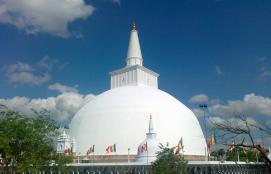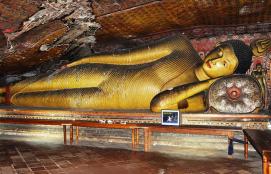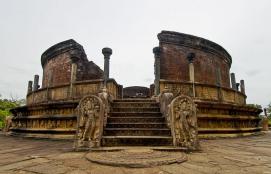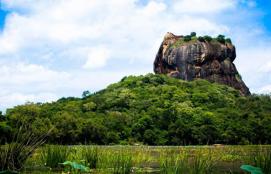Historic and Cultural Attractions
Sigiriya, also known as "Lion's rock" is an ancient rock fortress and palace ruin situated in the central Matale District of Sri Lanka, surrounded by the remains of an extensive network of gardens, reservoirs, and other structures. It is also known for its ancient paintings (frescos). The Sigiraya palace was built during the reign of King Kassapa I (AD 477 – 495), and it is one of the seven World Heritage Sites of Sri Lanka. It was used as a rock-shelter mountain monastery from about the 5th century BC, with caves prepared and donated by devotees to the Buddhist Sangha.
The monastic complex on the lower slopes of Ritigala-kande – the Ritigala Mountain - is situated in Sri Lanka’s North Central Province. These ruins are some of the most distinctive the island has to offer. The Buddhist dagabas (domed relic chambers) and statuary of Anuradhapura and elsewhere are conspicuous by their absence. Instead, the monastery largely consists of meditation platforms and walkways that are in perfect harmony with the huge boulders, noble trees, and burbling streams of the sylvan environment. That these unadorned yet inspiring ruins are situated at Ritigala, a mountain steeped in legend and mystery, adds to their attraction.
In one legend, Hanuman, the warrior monkey-god, came to Lanka in search of Lord Rama’s wife, Sita, who had been abducted by Ravana, the king of demons. After Hanuman had tracked down Ravana to his stronghold, he used the Ritigala Mountain as a launching pad to take a great leap across to South India in order to convey the news to Lord Rama. A monkey army led by Hanuman then crossed the straits separating South India from Lanka and waged war against Ravana. Eventually the demon-king was defeated and Sita restored to her husband.
Pidurangala, located down a dusty gravel track off the road leading to Sigiriya, the Pidurangala monastery, according to Dhaniyagama Ananda Thera, the chief priest of the temple, was built by King Kashyapa in the 5th Century A.D. Spread over 13 1/2 acres, the monastery gave sanctuary to 500 meditating bhikkus. The monastery was said to be 'panchavasa', complete with the five major ritual buildings, the Chapter House, Image House, the Bodhiya (Bo tree), Chaitya and the Sangharamaya or Sabha for the monks. At Pidurangala, temple buildings are located on both sides of the gravel track. A flight of stone steps leads to the rock cave temple. A brick building had been constructed in 1933, enclosing the mouth of the cave.




















